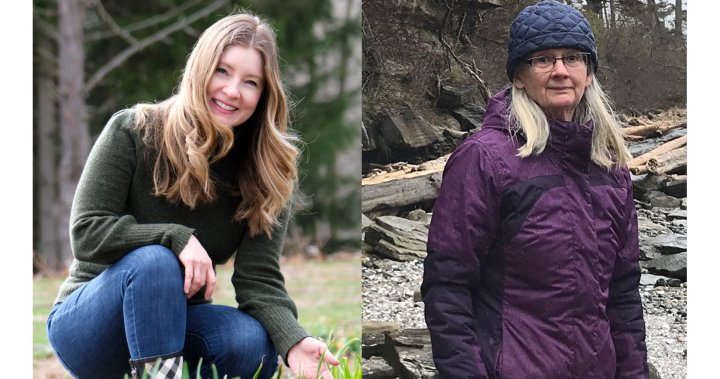In the past year living with COVID-19 restrictions, you’ve likely made a lot of changes in the name of health — for your family and your community. Ready to make a few changes for the health of the planet?
As people all over the world strive to find a new normal, now is a perfect time to take your daily green routine up a level or two, to move toward less waste.
According to Community Research Connections (CRC), a research group committed to sustainability based in Victoria, B.C., Canadians create a lot of waste, more “per capita than any other country on earth.” The group says each of us is responsible for approximately 2.7 kg of garbage each day.
More and more, people are adopting sustainable and zero-waste lifestyles. From one person just starting out to another with decades of experience, here are some tips to get you moving in a more earth-friendly direction.

Anne Marie Matthews and her husband moved from Toronto to the Niagara peninsula in Ontario in 2019. While the pair have always embraced a life of wellness and sustainability — they formerly owned and operated yoga studios in the GTA — homesteading on their 10-acre property has sparked greater connectivity with nature and a deeper sense of responsibility for the environment.
Matthews and her husband began raising chickens and cultivating an organic vegetable garden, among other things.
“The process of tending to the plants, having my hands in the soil and feeling so profoundly nourished by nature transformed me. It was hard work, but I am changed because of it,” Matthews says.
Anne Marie Matthews says her vegetable garden motivated her to embrace a zero-waste lifestyle.
Photo Credit: Colin Matthews
In 2021, Matthews committed to zero waste.
Inspired by Bea Johnson, author of Zero Waste Home, a book that launched an environmental movement around the globe, Matthews says that “starting (to reduce waste) in your own home can make a significant impact on the world around you.”
Adopting Johnson’s “Refuse, Reduce, Reuse, Recycle, Rot” method, Matthews set out a manageable target of reducing waste one step at a time.
In addition to growing her own vegetables, Matthews bakes homemade bread (freezing some for later use wrapped in cloth, not plastic or paper), makes her own lip balm and tooth powder, and uses natural household cleaners.
Anne Marie Matthews wraps homemade bread in linen, not plastic, before freezing.
Submitted: Anne Marie Matthews
“I started with small zero-waste changes in my home, room by room, and I keep building on them.”
Finding alternatives to single-use products and looking past the convenience of mass-produced packaged goods is a little extra work, but well worth it, she says.
“When I bring something into my home, I think about the end-of-use implications. I’m not complicating my life with a zero-waste approach, but rather intentionally simplifying, improving my family’s quality of life and reducing our impact on the environment.”
“I generally ask myself: is this a need or a want? Is this vital to our wellbeing? What is the cost to the environment? And is there an alternative solution I could consider instead?”

One frustration of going zero-waste, she says, is how challenging it is to shop without involving plastic, particularly when it comes to packaging.
“We had fresh greens from our garden until December, and when I did eventually make my way back to the grocery store, I really struggled (with having) to buy produce packaged in plastic.
“The increase in my plastic consumption during my winter shopping was notable, despite my best efforts to shop strategically.”
It’s a challenge that Meg Savory knows all too well.
Savory, who lives with her husband in Nanaimo, B.C., has been passionately making earth-friendly choices her entire life.
Meg Savory and her dog Cuska often scour the beach at Dunlop Point, Hornby Island, for trash to properly dispose of. (Submitted).
Submitted: Meg Savory
She describes her commitment to the environment as “driven, obnoxious, unforgiving,” derived in part from “living in a culture where there are so many passionate environmentalists.”
She also credits time spent at the family cottage on Hornby Island, “growing up a wild child, spending much of my childhood playing in the forest, foraging with my mom, and learning from my grandmother how to ‘make do.’”
For her, “making do” translates into making always-intentional buying choices — and starts with not buying at all.
“Buy nothing. Making stuff from scratch is my favourite,” Savory says.

For things she can’t make herself, she first looks for local options — mindful of the carbon footprint associated with transporting goods from international growers or manufacturers — and then moves outward in her search.
She says she starts with “tiny local providers,” then looks for “sustainability labels — like FSC for wood and Ocean Wise for seafood, etc.”
Even so, Savory says some ways of reducing waste, such as buying bulk foods, are not for everyone.
“I don’t like bulk foods because I’m afraid of germs (even before COVID). I don’t have the energy to always seek out packaging-free options.”
When she can’t find what she needs in local stores or second-hand shops, she uses Ecosia — “the search engine that plants trees.”
Going beyond reduce-reuse-recyle (the three Rs), Savory often repurposes, refurbishes or repairs.
Meg Savory prides herself on using a lesser-known R: repair, giving an old dustpan an extended life.
Submitted: Meg Savory
Why zero waste?
According to the CRC, “‘waste’ does not exist in nature. Ecological systems continually recycle water, minerals and nutrients through an interplay between sunlight energy, primary producers (e.g. plants), consumers (e.g. animals) and decomposers (e.g. bacteria).”
Matthews and Savory both believe choosing to live as waste-free as possible goes well beyond helping the environment.
“My life has been profoundly enriched by embracing a zero-waste and regenerative lifestyle. My family’s health and home are better for it and we have seen a measurable difference our actions are making in terms of reducing our household waste and plastic consumption,” Matthews says.
“Environmental protection is probably my highest value,” Savory says. “I cannot think of a decision I make where the environment isn’t foremost in my mind. What I buy or don’t buy, where I go or don’t go, how I recreate — all decisions and actions. It’s constantly in the forefront.”
Where to begin
While the three Rs are widely known, zero waste begins with taking next steps, says Colleen Ans of Manitoba’s Green Action Centre.
The organization offers “practical, simple and effective ways to live sustainably – at work, at home, at school, and in your community” according to its website.
“It is most important to reduce the amount of single-waste items we consume by introducing a fourth R: refuse. Refuse things like straws, plastic bags, takeout cutlery, receipts, and anything that you don’t actually need,” Ans says, noting change can happen through “action, communication, and mindful consumption.”
In addition to refusing single-use items, the centre suggests simple steps to add to your routine:
- Reduce food waste by meal planning
- Compost to divert food waste from the landfill
- Try a Meatless Monday

Zero waste doesn’t have to be an all-or-nothing endeavour. It is a journey taken each day with incremental steps in order to make a less harmful impact on the planet.
Matthews suggests beginning with a home garbage audit. Start with the bathroom, perhaps, and add from there. “During a garbage audit, pay attention to what you put in the garbage in order to seek alternative solutions or simply refuse to buy that product in the future.” Consider biodegradable options for things like dental floss and toothbrushes. Are the compostable alternatives to items packaged in plastic?
Matthews also suggests:
- buy in bulk or at product refill stations using refillable containers
- plant/harvest fresh vegetables. If you don’t have a yard, try a container garden or sprouting jar for fresh greens
- be diligent about recycling, know what is accepted in your local blue box and take care to clean/organize as needed
Savory offers the following easy-to-do activities:
- choose the product with less-packaging; look at every purchase with a less-packaging mindset
- join or start a toy sharing group
- join your neighbourhood “buy nothing” group
- buy stuff secondhand — “thrift it”
- choose reusable alternatives for plastic wrap and paper towels
There is an abundance of ideas, including 101 tips for beginners, on how to move toward zero waste. Find ones that work for you online, or in a book borrowed from your local library.

Think of it as an investment
When it comes to buying choices, money matters. Living an environmentally-friendly lifestyle, shopping local, buying items that are made in environmentally responsible ways — should all be considered worthwhile spending — an investment.
“It definitely costs money,” Savory says. “More environmentally friendly products are often more expensive, and it takes time and effort. But all of this is not a hardship compared to the sense I have that I’m making a difference.”
Keeping food packaging to a minimum, Anne Marie Matthews uses glass jars to buy/store dry goods.
Submitted: Anne Marie Matthews.
For Matthews, the shift to zero waste is an ongoing process that hasn’t happened overnight. Moving away from the conveniences of day-to-day living takes time and effort — and research, too.
In her commitment to living her own regenerative lifestyle, she’s now preparing to make it a livelihood. Her website — MyRegerativeHome.com — will share her zero-waste insights in the hope of helping others take steps toward better care for the environment.
© 2021 Global News, a division of Corus Entertainment Inc.



